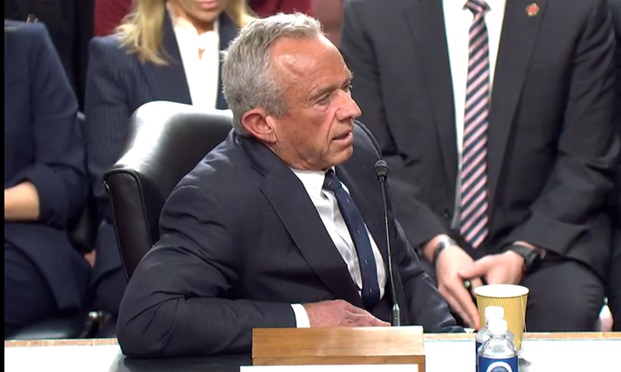 Common issues that could trigger a 226J letter include failure to select MEC indicator and a disconnect between the payroll vendor and benefits professional. (Photo: Shutterstock)
Common issues that could trigger a 226J letter include failure to select MEC indicator and a disconnect between the payroll vendor and benefits professional. (Photo: Shutterstock) The Affordable Care Act (ACA) contains a requirement called the Employer Shared Responsibility Provisions (ESRP). This requirement is also referred to as the Employer Mandate. Under this mandate, Applicable Large Employers (ALEs) that have 50 or more employees (full-time or full-time equivalents) are required to offer coverage to the employee and children dependents. Failure to offer coverage can result in penalties.
Many ALEs have received Letter 226J from the IRS that indicates their proposed assessment of a penalty under the Employer Shared Responsibility Provision (ESRP) of Section 4980H of the Patient Protection and Affordable Care Act (ACA). These penalty calculations are based on data provided by employers to the IRS on Forms 1094 and 1095.
Recommended For You
Letter 226J outlines several things for the ALE receiving it. The letter will tell the ALE what the proposed penalty assessment could be and will also state whether the assessment is based on an "A" or "B" Penalty. An "A" Penalty is assessed when at least one full-time employee is provided a premium tax credit when the employee obtains coverage in the healthcare marketplace exchange.
An ALE may be subject to a "B" Penalty if employees decline substandard coverage offered by the ALE and then receive a tax credit when obtaining coverage from the marketplace exchange. The letter also provides a list to the ALE of the full-time employees that received a premium tax credit and therefore created the potential for a penalty under the ACA.
For each "penalty eligible" month, the IRS calculates the penalty as follows:
- If the ALE did not offer healthc are coverage in 2015 to at least 70 percent of all FT employees and their dependents for such month, the penalty will be calculated as:
[ $2,080* x (All FT Employees) – 80 ]
For subsequent years, ALEs will need to offer coverage to at least 95 percent of FT employees and dependents and penalty calculation will be [ $2,000* x (All FT Employees) – 30 ]
2. If the ALE offered health care coverage in 2015 to at least 70 percentof all FT employees and their dependents, the penalty will be calculated as:
[ $3,120* x (# of FT employees who received a PTC) ]
For subsequent years, ALEs will need to offer coverage to at least 95 percent of FT employees and dependents.
* These amounts are adjusted annually.
The IRS sends the Employer IRS Letter 226J proposing an "Employer Shared Responsibility Payment" that includes:
- Total proposed penalty for the calendar year, with calculations
- List of employees who received a Premium Tax Credit (PTC), by month
- Employer has about 30 days to respond, but may request a short extension
The good news is that most 226J Letters are the result of typos and can be easily corrected. Common issues include failure to select MEC indicator and a disconnect between the payroll vendor and benefits professional. When that letter arrives, employers should take the following steps to remedy: Phase 1 Goal: Penalty elimination
- Review 1094-Cs and 1095-Cs for PTC listed employees
- Verify enrollment status of PTC employees
- Verify offers of health coverage for non-enrolled PTC employees
- Verify FT/LNA status of PTC employees
- Prepare PTC employee verification report
- Calculate adjusted 4980H assessment
- Correct PTC listing errors
- Assist in client response to letter 226J
Phase 2 Goal: Penalty reduction If Phase 1 of the Penalty Defense Analysis is unable to reduce the number of properly PTC Listed employees to zero, then the employer may choose to perform a comprehensive redetermination of the tax year data.
A proficient vendor may be able to dramatically reduce the penalty exposure for a given tax year by performing an accurate redetermination of the ACA data underlying the ACA filings for a specific tax year.
Employer responds to Letter 226J using form 14764 "ESRP Response." Employer will either:
- Agree with the initial assessment and pay proposed penalty.
- If the ALE pays the originally proposed assessment amount the process ends here.
- Disagree all or in part with the initial assessment and provide revised proposed penalty.
- The IRS will acknowledge the employer's response to IRS Letter 226J with IRS Letter 227. Letter 227 will describe further actions that the employer may need to take.
- If the employer disagrees with the IRS's proposed or revised, if applicable, penalty amount, employer may request a Pre-Assessment Conference with the IRS Office of Appeals within 30 days of the date of Letter 227.
It is very important for ALEs to respond to Letter 226J and to do so in a timely manner. The IRS provides 30 days, from the date of issuance, for ALEs to respond, and if no response is made by the ALE, the IRS will conclude the employer does not disagree with the proposed assessment.
 Michael Gomes is president, Benefits Division of BenefitMall.
Michael Gomes is president, Benefits Division of BenefitMall.
© Touchpoint Markets, All Rights Reserved. Request academic re-use from www.copyright.com. All other uses, submit a request to [email protected]. For more inforrmation visit Asset & Logo Licensing.






